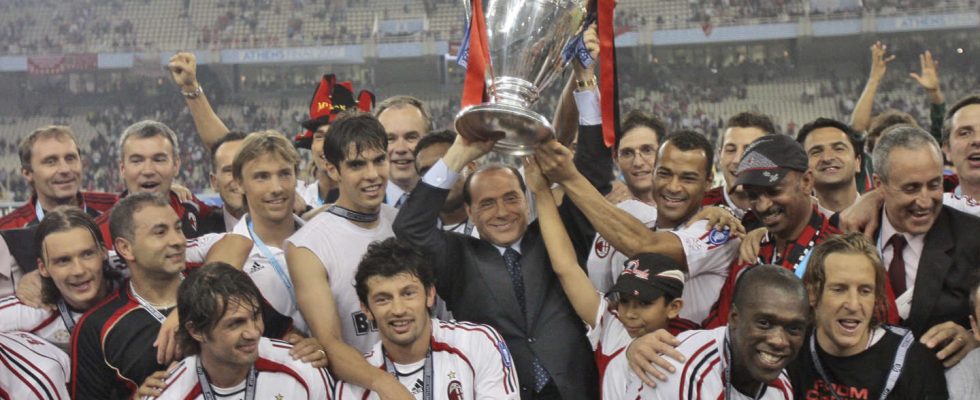“I go down to the field. » In January 1994, the words used by Silvio Berlusconi, who died on Monday June 12, 2023, to announce that he was entering politics, owe nothing to chance. By using this sporting metaphor, the then president of the “great” AC Milan wants to show that the victorious recipes he applied in sport can be applied in politics. Didn’t he bring a football club to the top (that year, the Rossoneri would win their fifth Champions League, the third in the Berlusconi era)? Why couldn’t he do the same with the country and bring it to the table of the great nations? Moreover, by calling his party Forza Italia (equivalent to “Allez les Bleus” in France), Berlusconi sees further and wants to build a nation of supporters. The political results will be much more mixed than in football.
As early as 1995, Manuel Vazquez Montalban, a Catalan author connoisseur of football and politics, wondered in the columns of Diplomatic world : “Would Silvio Berlusconi have succeeded in presiding over the government of Italy without the help of AC Milan football club and its legendary players, Van Basten, Gullit, Rijkaard…? (…) The young people, at the time of voting Berlusconi, elected above all the “winner” in business and the strategist of the glorious victories of AC Milan. »
Because, when he goes to attack power, Berlusconi – a native of Milan – is, of course, known to be a man of the media and an entrepreneur, but the Italians identify him above all as the one who makes Italian football shine in the world. ‘foreign. President of AC Milan since 1986, he took possession when the Lombard team was on the verge of bankruptcy.
No question, for him, of playing the substitutes. Admittedly, when he arrived at the head of the club, AC Milan already had a great history behind him. But that did not prevent the television and real estate mogul, then 50 years old, from wanting to impose his mark, playing the card of modernity and profoundly changing the club. He invested billions of lire in infrastructure – Milanello, the training center, became a model of modernity – and in recruitment.
He confirms Franco Baresi as the keystone of the team and commits with a vengeance. Even before the Bosman ruling, which liberalized player transfers in Europe in 1995, Berlusconi and “his” Milan brought in the Dutch Ruud Gullit, Marco Van Basten and Frank Rijkaard. Other figures also emerged at the same time: Paolo Maldini, Carlo Ancelotti, Roberto Donadoni, Alessandro Costacurta and Demetrio Albertini.
You have 63.91% of this article left to read. The following is for subscribers only.

